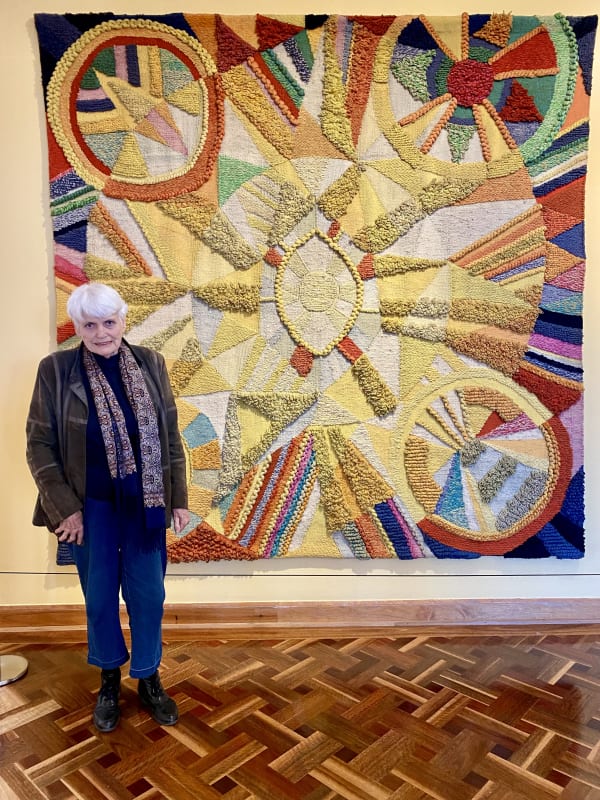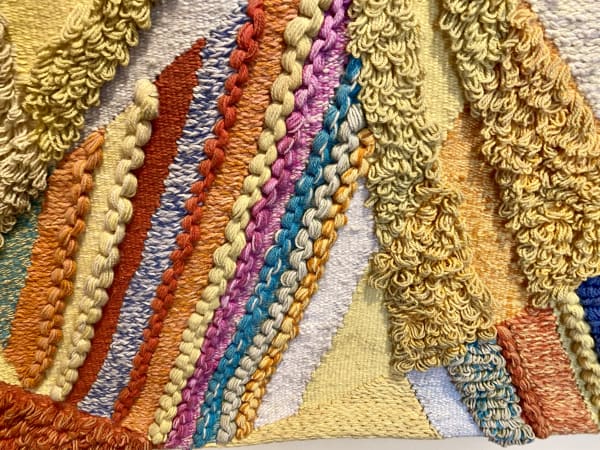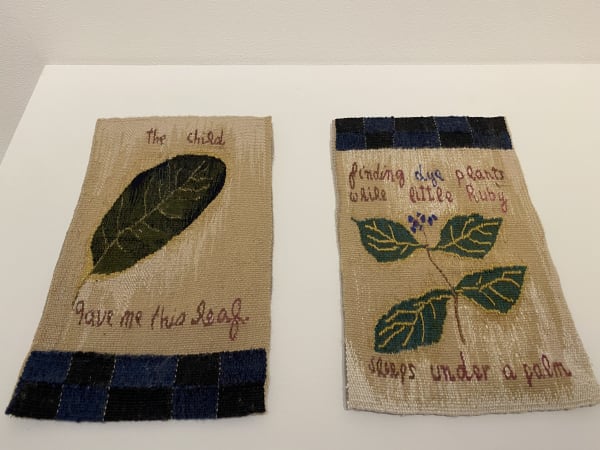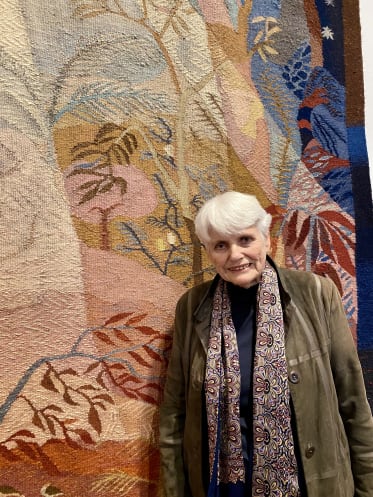When I ask artist Diana Wood Conroy to tell me about herself, she pauses for some time. How do you put into words a lifetime of artistic practice, of academia, a love of painting and tapestry and archaeology, working on dig sites and in world-famous museums, of motherhood, of a house in the wild subtropical forests of northern New South Wales, of teaching and writing and of loss?
We are sitting in the Wollongong Art Gallery surrounded by some of her tapestries and paintings drawn from private and public collections from around the world. Decades of work are represented here. Thousands upon thousands of hours behind the loom, sometimes high atop scaffolding to create pieces enormous in scale and, above us on the balcony, dozens of small watercolours, a daily ritual, marking time, small scenes as viewed from her bedroom window.
She begins, “By the time you’re 80 years old, there’s quite a lot to tell.”

Two moments stand out to me as integral to getting us here, surrounded by the works of her current exhibition, Diana Wood Conroy: An Archaeology of Woven Tapestry, and they both involve museums.
During a family trip to England, Diana – already fascinated with archaeology but with no means to afford a trip to Cairo and the museum she was so desperate to see – took matters into her own hands.
“I was 15 years old, so I set myself to winning the Ladies Deck Quoits Championships, which enabled me to get five pounds so that I could afford to go,” she said. “After that [trip to the Cairo Museum] I was hooked.”

Diana went on to obtain a degree with honours in archaeology and this, along with her life-long talent for drawing, saw her move to Europe and work as an archeological illustrator. “All archaeological objects have to be drawn as well as photographed,” Diana explained.
“While I was working at the British Museum in one of my illustrator jobs… they said, ‘Diana, just go and sort that cupboard.'
“So I went and sorted the cupboard and found boxes that had been sent from Egypt in the 1950s and never opened,” she said. “And they were full of little Coptic tapestries. They were brilliantly coloured. Animals and plants, and so I found somewhere to teach me to weave. Never looked back.”
And it turns out archaeology and tapestry have much in common. Diana said, “Archaeology is based on a grid. You grid up the site, plan it and then stratigraphically you go down and plan the sides of the trenches… In a sense, it is quite like weaving, which is also based on a grid; vertical, horizontal, and measurement, extremely fine measurement.”
The tapestries in this exhibition – some commissions from her time working with architects Noel Bell and Ridley Smith, others from private collections around the country – took three years to find, gather together and restore.

They speak to the changes in her life. When she was living in the then wild forests of Bellingen with her husband, Joseph, her tapestries were filled with foliage and birds and she says, “I saw my identity in the nature around." Later works contain elements of the Illawarra environment, such as coal wash, after moving to the Illawarra in the 1990s to work as an artist in residence at the University of Wollongong.
The enormous tapestries of the 70s and 80s give way to pieces combining illustrations with smaller sections of weaving. “I started then to weave fragments, and this was a way I could combine drawing, and weaving wasn’t quite so time-consuming and it was also fresh and exciting,” Diana said.
“I liked the fact that it was fragmented because it made you realise what was lost and I felt that I’d lost a lot by coming to Wollongong, even though it was an exciting new world. I’d lost my little house in the forest and I loved my forest so I suppose I took on the ancient loss as sort of metaphor for loss generally.”
There are smaller tapestries still, exhibited as part of Plant Stories: Woven Tapestry Narratives, a group exhibition held last year in the Australian National Botanic Gardens. Diana says, "I said in the catalogue after I made them I thought, 'Oh, they look awfully like the Bellingen ones.' It's a circle."

The daily watercolours, depicting a moment in each day, are most often painted from her bedroom. And perhaps it is a circle. The loss of Diana's forest home that she so loved is replaced now with the Illawarra's looming escarpment and sparkling coastline.
“I love the mountains and the sea of the Illawarra,” Diana says. “It’s very much home now.”






